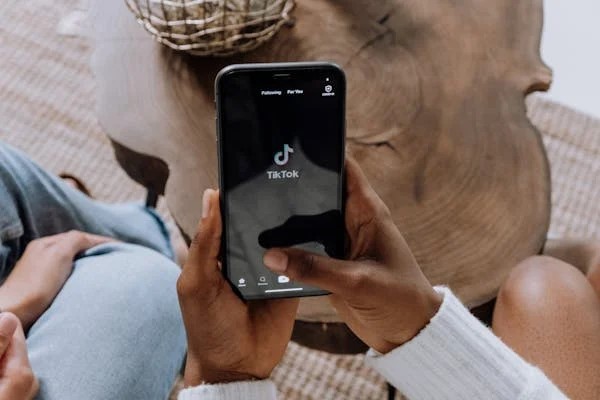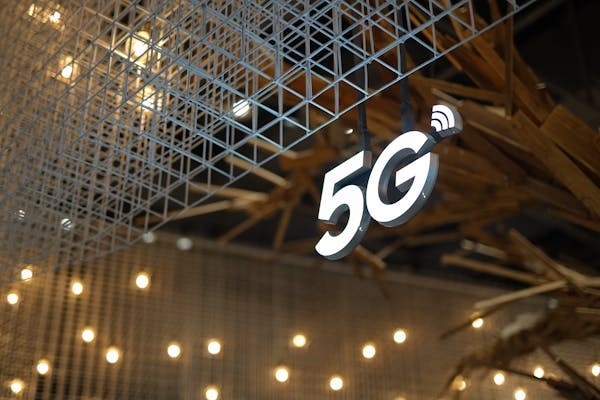
1. Introduction to New Mobile Media
New mobile media refers to the changing ways that we consume content on mobile devices such as smartphones and tablets. With the world becoming increasingly mobile-first, traditional methods of media consumption, like television and print newspapers, are being overtaken by apps, mobile websites, and social media platforms. Mobile devices allow users to access news, entertainment, and social interactions on-the-go, making them indispensable in daily life.
As the demand for convenience and instant access grows, the rise of mobile media is a response to the way modern consumers live. The ease of tapping on a screen to stream a video, check social media, or browse the web has drastically changed the digital media landscape.
2. The Growth of Mobile Media Consumption
Over the past decade, New Mobile Media consumption has skyrocketed. Statista reports that over 90% of internet users access the web through mobile devices. This shift is due to several factors, including better smartphone technology, faster mobile internet speeds, and more content being optimized for mobile experiences.
The growth is not just limited to social media platforms or entertainment apps. Educational content, news outlets, and e-commerce have all adapted to provide mobile-friendly experiences. From live-streaming events to reading articles on-the-go, mobile media has permeated every aspect of daily life.
Why is New Mobile Media So Popular?
Several factors contribute to the growing popularity of mobile media:
- Portability: People can access media anywhere and at any time.
- Variety: There’s an abundance of content available, from videos and podcasts to articles and games.
- Convenience: Mobile devices are designed to fit seamlessly into busy lives.
This convenience and flexibility make mobile media an essential part of modern culture and one of the driving forces behind the digital transformation.
3. How New Mobile Media is Transforming Marketing
The rise of New Mobile Media has also had a profound effect on marketing strategies. Brands are leveraging mobile platforms to reach consumers where they spend the most time: on their phones. Traditional marketing methods are becoming less effective, while mobile-first strategies are driving significant changes.
Mobile Advertising
New Mobile Mediaads are increasingly becoming a central element of online marketing campaigns. Whether through social media ads, mobile-friendly websites, or in-app promotions, businesses are reaching their audiences in more personalized and targeted ways. Features like geolocation targeting allow businesses to serve ads based on a user’s physical location, improving the relevance of the content.
Influencer Marketing
Influencer marketing has exploded on mobile platforms, especially through social media channels like Instagram, TikTok, and YouTube. Brands collaborate with influencers who have large followings, using mobile media to promote their products in an authentic, engaging way. The integration of product placements into videos and posts often feels less intrusive than traditional ads.
4. Mobile Apps and the Rise of Streaming
Streaming platforms like Netflix, Spotify, and YouTube have revolutionized how people consume entertainment. What’s most significant about these platforms is their heavy reliance on mobile media. In fact, a growing number of consumers now prefer to stream content via mobile apps rather than traditional TV.
On-Demand Content
Mobile apps offer the ability to watch content whenever and wherever you want. The on-demand nature of mobile media enables users to binge-watch shows, listen to music, or stream live events directly from their mobile devices, making it a more flexible experience than ever before.
Gaming Apps and E-sports
Mobile gaming has also exploded in popularity, with millions of gamers playing on smartphones daily. Mobile apps such as Candy Crush, PUBG Mobile, and Fortnite have not only redefined entertainment but have created new ecosystems for e-sports, tournaments, and mobile game development.
5. Social Media and Mobile Content Creation

Social media platforms like Facebook, Instagram, TikTok, and Twitter have become synonymous with mobile media. These platforms allow users to create, share, and consume content seamlessly from their phones.
User-Generated Content
Mobile media has empowered users to create their own content with just a smartphone. From videos to photos and even live streams, individuals can now share their experiences with a global audience. This democratization of content creation has shifted the media landscape from top-down production to a more decentralized, participatory model.
Impact on Personal Branding
Many influencers, bloggers, and content creators rely on mobile media to build personal brands and connect with their audience. Whether it’s through short TikTok videos or Instagram stories, mobile media offers an immediate and authentic way to interact with followers.
6. New Trends in New Mobile Media Advertising
As mobile media evolves, so does mobile advertising. Advertisers are finding new ways to engage consumers through innovative formats and targeting options. For example, ads within apps or even during live streams have become increasingly popular.
Interactive Ads
Instead of the typical banner ad, interactive ads allow users to engage with the content. For example, ads on Instagram or TikTok might prompt users to swipe up for more information or even purchase items directly.
Augmented Reality (AR) Ads
AR ads allow users to interact with advertisements in new ways, offering a more immersive experience. For instance, a cosmetics brand might use AR to let users “try on” makeup virtually via their smartphone screen.
7. The Impact of 5G on New Mobile Media
The rollout of 5G technology promises to revolutionize the way we experience mobile media. With faster speeds and lower latency, 5G enables smoother streaming, higher-quality video calls, and more immersive experiences for users.
Faster Content Delivery
5G promises faster download speeds, making it easier to stream high-definition videos, play graphics-heavy games, and interact with augmented or virtual reality apps.
Enhanced Virtual and Augmented Reality
5G could be the catalyst for AR and VR technologies to reach mass adoption. As mobile devices become more powerful, the possibilities for entertainment, gaming, and even education expand exponentially.
8. Mobile Media and User Privacy

With the growing consumption of mobile media comes growing concerns about user privacy. Mobile apps collect massive amounts of personal data, from location to browsing habits. This data is often used to personalize ads, but it can also be vulnerable to breaches.
Data Privacy Concerns
Consumers are becoming more aware of the information they share through mobile apps. Concerns about data privacy and the misuse of personal information have led to increased regulation, such as the GDPR in Europe.
Mobile Media and Consent
There’s a growing trend toward transparency and user consent when it comes to data usage. Many apps now ask for permission to collect data or offer the ability to limit tracking.
9. The Role of Artificial Intelligence in New Mobile Media
Artificial intelligence (AI) is already playing a significant role in shaping the future of mobile media. AI is used to recommend content, optimize ad placements, and even enhance mobile media creation.
Content Personalization
AI algorithms are at the heart of personalized experiences. Whether it’s recommending videos on YouTube or tailoring social media feeds, AI analyzes user behavior to predict what content they’re most likely to engage with.
Voice Assistants and AI Integration
AI-powered voice assistants like Siri, Alexa, and Google Assistant are integrated into mobile devices, allowing users to interact with media through voice commands. This technology is only expected to grow as more people use voice to consume content.
10. Challenges and Opportunities in New Mobile Media
While the growth of mobile media presents numerous opportunities, it also comes with challenges. The increasing reliance on mobile devices raises concerns about screen addiction, content overload, and data security. On the other hand, businesses that adapt to mobile-first strategies stand to gain access to a global audience.
Content Overload
With so much content available, users may feel overwhelmed. Curating relevant and high-quality content will be key to standing out in an increasingly crowded mobile landscape.
Emerging Markets
There are vast opportunities in emerging markets where mobile media is just beginning to take off. As internet access improves globally, new users are entering the mobile media space, creating fresh opportunities for businesses and content creators.
11. Future of New Mobile Media
Looking ahead, the future of new mobile media will likely involve even more immersive, interactive, and personalized experiences. Virtual reality, augmented reality, and artificial intelligence will continue to redefine how we engage with media. Additionally, as mobile media consumption grows, businesses will need to embrace new technologies and innovative strategies to stay competitive.
12. Conclusion: Navigating the Mobile Media Future
The future of mobile media is exciting and full of potential. As mobile devices continue to evolve and become more powerful, the ways we consume and create media will continue to shift. Whether you’re a business looking to reach consumers or an individual simply enjoying the benefits of mobile entertainment, one thing is clear: mobile media is here to stay.
FAQs
- What is new mobile media? New mobile media refers to the growing trend of accessing and consuming content on mobile devices such as smartphones and tablets. It includes everything from social media to streaming apps.
- How is mobile media changing marketing strategies? Mobile media is changing marketing by enabling more personalized, location-based advertising and giving rise to influencer marketing, all while offering more interactive ad formats.
- What are the benefits of mobile apps in media consumption? Mobile apps provide users with on-demand, easy access to content, allowing them to watch, listen, or interact with media wherever they are.
- How does 5G technology impact mobile media? 5G technology improves mobile media experiences by offering faster speeds, lower latency, and enabling more immersive technologies like augmented reality.
- What are the privacy concerns related to mobile media? As mobile media relies on personal data for content personalization, users are concerned about how their information is collected, used, and potentially exploited by third parties.










